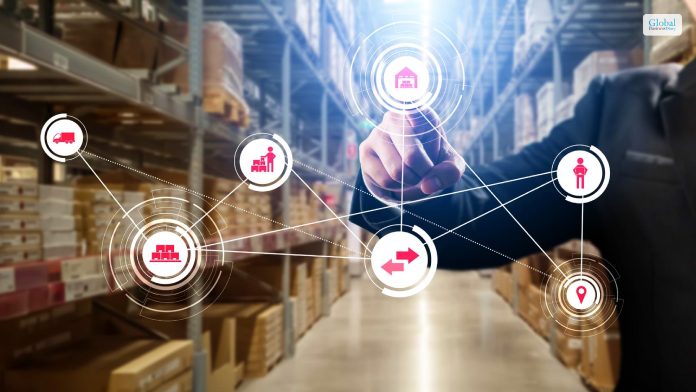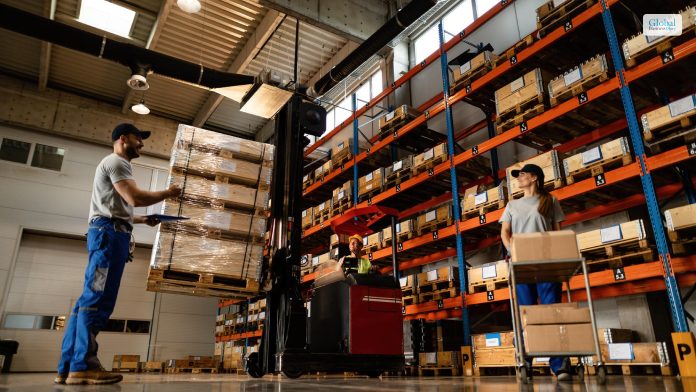What Are Distribution Channels In The Context Of Business?

Distribution channels are extremely important for businesses when it comes to processes related to marketing. When a business chooses a distribution channel, it is basically working for the route of the product from the manufacturer to the consumer. There are various ways through which a business can choose to distribute its product depending on the market. The business does it with the help of the distribution channel it chooses.
In this article, you will learn about distribution channels in general and how they work for businesses. Furthermore, we will also learn the major components of distribution channels. Then, we will take a look at various types of distribution channels that are available for business. Finally, you will learn how to choose a distribution channel for your marketing processes. Hence, to learn more, read on through to the end of the article.
What Are Distribution Channels?

According to the Corporate Finance Institute,
“A distribution channel, in simple terms, is the flow that a good or service follows from production or manufacturing to the final consumer/buyer. Distribution channels vary but typically include a producer, a wholesaler, a retailer, and the end buyer/consumer. A distribution channel can also provide a sense of how money flows back from the buyers to the producer or original point of sale.”
Hence, when it comes to manufacturing businesses, they need to create a good mix of distribution channels so that there is easy availability for consumers. Basically, they must ensure that the consumers get the products easily. The goal is to create a good marketing mix for the business.
The business needs to settle on a distribution channel or more that suits its business processes. However, it needs to consider the diversity and scope of its business, as well as its own distributions. The business must choose those channels that are good for generating sales and providing ease of access to consumers.
The business, basically, passes its goods and services through distribution channels. A distribution channel consists of a network for businesses and/or intermediaries until it reaches a final buyer or the target consumer. In many cases, wholesalers, distributors, retailers, and even the Internet come under the purview of distribution channels.
Read More: What Is A Holding Company? – Importance, Operation, And Pros & Cons
How Do Distribution Channels Work? – Major Components

According to Investopedia,
“A distribution channel is a path by which all goods and services travel to arrive at the intended consumer. Distribution channels can be short or long, and depend on the number of intermediaries required to deliver a product or service. Increasing the number of ways a consumer can find a good can increase sales but it can also create a complex system that sometimes makes distribution management difficult.”
As a distribution channel gets longer, the profits of each intermediary along the way get lesser. On the other hand, in a shorter distribution channel, the profits of each intermediary along the way are higher.
What Are The Types Of Distribution Channels?

The following are the three major types of distribution channels for business:
1. Direct
Here, the consumers of the company make purchases directly from the manufacturer. Hence, there is lower spending on channels and more profits for the business.
2. Indirect
In this case, the consumer buys the goods from a wholesaler or a retailer. These hold true for goods that are sold in any physical store. Hence, there is less profit but further reach for the business.
3. Hybrid
Here, the business uses both direct and indirect channels. The product or service that the business creates sells through its own retailers as well as through other retailers.
How To Choose The Right Distribution Channel For Yourself?

The distribution channel you choose determines the prices of your goods and products or the profits you can keep. It also determines how your product is marketed.
According to Indeed.com,
“Distribution channels can include a variety of intermediaries, which are third-party firms that can help a company promote and sell its products to buyers, depending on the channel used. The more intermediaries in a distribution channel, the more fees the manufacturer has to pay. Short distribution channels are easier to navigate but have less potential for increasing a company’s customer base.”
The following are the ways through which you can choose your distribution channel:
1. Make sure the distribution channel aligns with the goals of your company. It also depends on your priority. If your business is customer-centric, then you will need to ensure that your customers get more choices. On the other hand, if your focus is affordability, choosing a simple distribution channel will work wonders for you.
2. Stick to the options that are expert in the field that you are in. You will need to choose a distribution channel that works more at par with your pace. If you manufacture goods that perish fast, you will need to choose a distribution channel that delivers quickly and knows how to deal with the product.
3. Choose those distribution channels that are already operating with companies similar to yours. These channels have good relationships with your target customers and know what the latter want. Then these channels will become your natural partner.
4. You must always choose a distribution channel, ensuring there are no internal conflicts. If you sell the same product through a physical retailer as well as an online wholesaler, there might be unnecessary competition among the channels. You can do that once your company is big enough.
Read More: What Are Articles Of Incorporation? – Importance, Working, And More
Wrapping Up
Hope this article was helpful for you in getting a better idea of what a distribution channel is. Distribution channels consist of chains of businesses or intermediaries with the help of which the main business ensures that the final buyer purchases goods or services. Such channels also include retailers, wholesalers, distributors, and even the Internet.
Distribution channels can be of two types – direct and indirect. In the former, the manufacturing business sells directly to the consumer. On the latter, the product or services go through multiple intermediaries before ending up with consumers. Do you have more info to add regarding how a distribution channel works? Share your ideas in the comments below.
Make Better Business Decisions By Reading More Below!













